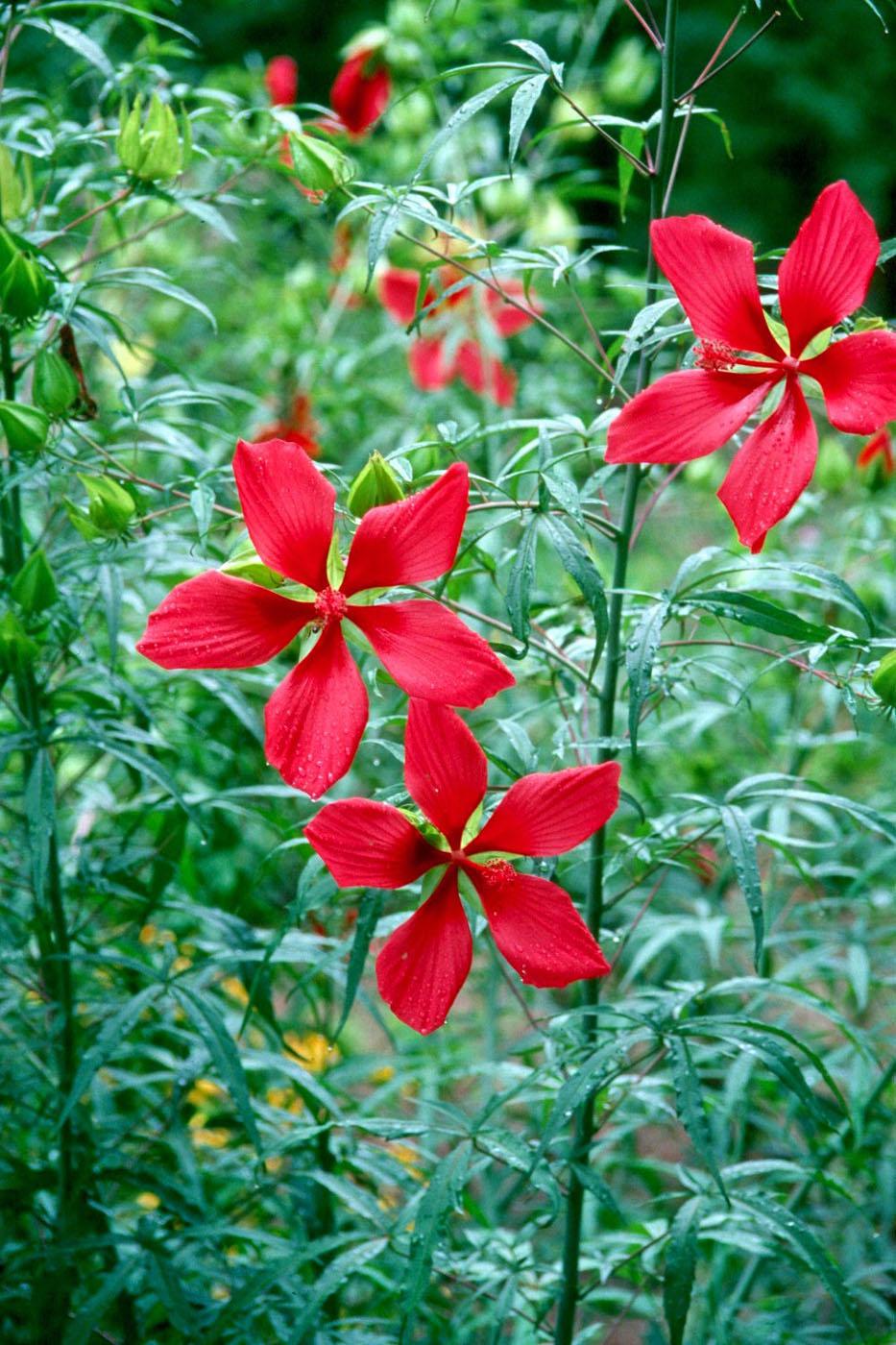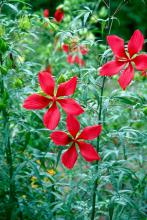Information Possibly Outdated
The information presented on this page was originally released on June 16, 2005. It may not be outdated, but please search our site for more current information. If you plan to quote or reference this information in a publication, please check with the Extension specialist or author before proceeding.
Versatile Texas Star shines in tropical, cottage gardens
By Norman Winter
MSU Horticulturist
Central Mississippi Research & Extension Center
Not too many plants can look equally at home in a tropical garden and an old-fashioned cottage garden, but such is the virtue of the Texas Star hibiscus. This hibiscus, known botanically as Hibiscus coccineus, also is known by less enticing names like swamp mallow or scarlet mallow.
This cold-tolerant perennial is hardy from zones 5 through 10 and produces some of the tallest plants for the flower border. Scarlet, star-shaped flowers are produced in abundance to the delight of the ruby-throated hummingbird. The foliage is a striking glossy-green and maple-like.
In the landscape, create an exotic look with large banana plants growing behind one of these shrubs, or plant a yellow bush-form allamanda in front. Combine them with cannas and elephant ears. Place them to the back of the border to hide their giraffe leg-like stalks.
Though considered a plant for all soils, requirements for the Texas Star hibiscus are much like those of other perennials.
Plant in well-drained, well-prepared beds and use a good layer of mulch to keep the soil evenly moist through the season. This hibiscus is found growing naturally in sandy, moist, acidic soils in Georgia and Florida. Plants can easily reach 6 feet in height and width, so space on 3-foot centers.
Choose a site with plenty of sunlight. Morning sun and filtered afternoon light are just about perfect in our state. Hibiscus blooms on new growth, so it is important to keep it growing vigorously throughout the season. Keep them well fed and watered during periods of drought.
Many gardeners think the prolific flower production of a hibiscus requires a lot of super-bloom-type fertilizers high in phosphorous, but this is not the case. Hibiscus prefers a balanced fertilizer given out in small, monthly applications.
Water daily if you are growing hibiscus, or any other plant, in containers during the summer. Nutrients quickly leach from the soil, so apply a diluted, water-soluble fertilizer weekly or add time-released granules per label recommendation.
Periodically, we get calls from gardeners who get aphids. Before using an insecticide, make sure yours is labeled for hibiscus. If possible, simply pick the aphids off hibiscus buds. A little extra patience on your part may bring on ladybugs at just the right time to do your aphid control naturally.
If you are treating hibiscus, roses or any other plant with an insecticide during the summer, water them well a couple of hours before the insecticide application.
After the Texas Star plants have frozen in the fall, cut them back to ground level and add a little extra mulch. I always go for nursery-grown plants, but many gardeners ask if these can be grown from seed, and indeed they can. It does help to lightly scrape with sandpaper for easier germination.
I am passionate about the tropical hibiscus and wish gardeners everywhere could see the new varieties that will be coming out in the near future. For now, it is exciting when a perennial like the Texas Star makes our yards look like Jamaica.



